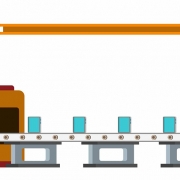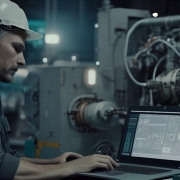Ten technologies that are transforming industrial production (Part I)
The introduction of Industry 4.0 supposes the modernization of industrial manufacturing and an irrevocable change in the way in which companies produce their goods and compete within their specific industry. This is being possible thanks, in large part, to the technological advances that have been taking place in recent years. Advances without which it would be impossible to speak of the paradigm shift that is taking place.
New technologies that have emerged often overlap in scope and application as they are designed to fully integrate with each other to produce a cohesive manufacturing unit. Next, we are going to detail which are the main technological advances that are enabling Industry 4.0 to be prevailing in the current scenario. We are going to divide it into two parts, in this article and in the next, which will be published in the next few days.
5G networks
The arrival of 5G mobile communication technology benefits both consumers and industries. With it, a wave of new and innovative services can be promoted. When it comes to manufacturing, 5G networks will change the traditional role of wireless communication, as the previously limited connectivity that most plants, factories and warehouses experienced until now will be a thing of the past.
5G will offer a more reliable and consistent connection with almost negligible latency, manufacturing plants will now be able to rely on autonomous machines to perform their functions without interruption. This will allow for higher production levels with the need for little, if any, supervision other than periodic maintenance checks.
Furthermore, 5G will facilitate the Industrial Internet of Things (IoT), which keeps all machines, computing devices and communication devices constantly connected to each other.
Manufacturing Applications
Custom mobile apps help minimize the chaos of data collection and asset tracking many times, ultimately increasing productivity and keeping the shop floor running smoothly.
They can help bridge the gap between time and space between facilities by integrating with CRM software, the result of which is constant communication between customers, workers, and plant managers, making it easier to process orders in a more appropriate way. and flexible.
IIoT
The Industrial Internet of Things (IIoT) is undergoing a digitization process that will be followed by intelligent capabilities such as predictive maintenance and predictive or intelligent production. Connecting a complete machine, tool and device manufacturing network is not without its obstacles, but the opportunities it provides in the long term far outweigh the difficulties.
Opportunities IIoT can offer include energy efficiency, increased production value and quality, predictive maintenance, reduced downtime, and the potential for smarter, more automated decisions.

Cobots
The use of robotic technology in manufacturing is not a new concept. However, what is new are robots, commonly known as collaborative robots or cobots, they come to occupy the space between robots and operators.
They are typically smaller than robots on the automated production line and can therefore work alongside human workers and assist them in their tasks rather than replace them.
Wearables
It is technology that is already known to the general public, such as glasses, watches or clothing that contain chips or applications that provide data in real time, making it unnecessary to search for them.
Wearables in industrial environments are proving very interesting in terms of safety because they can provide alerts for breakdowns and failures of the product line, alerts for the appearance of toxic gases, unexpected changes in temperature or employee accidents, to name a few examples.









